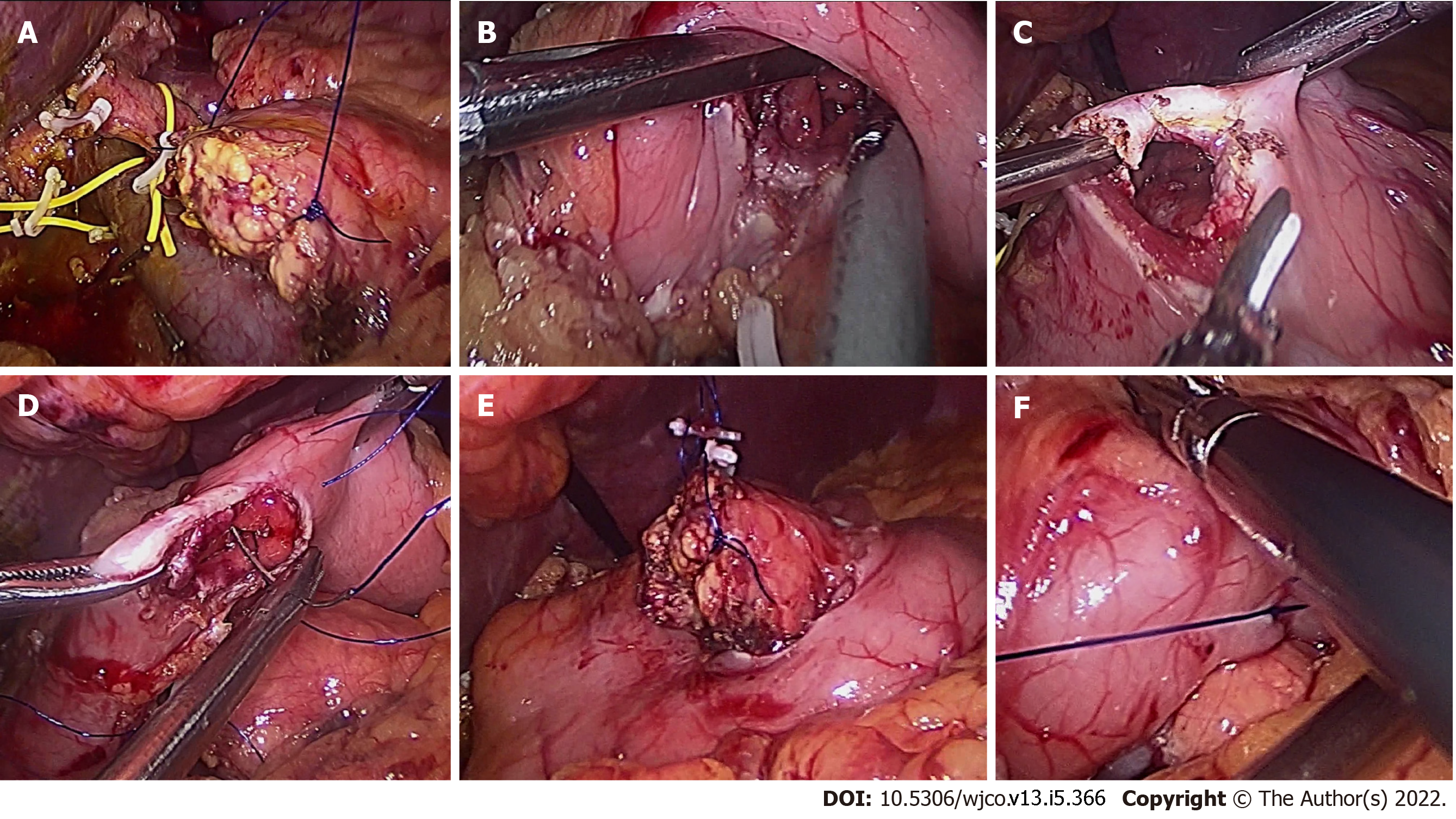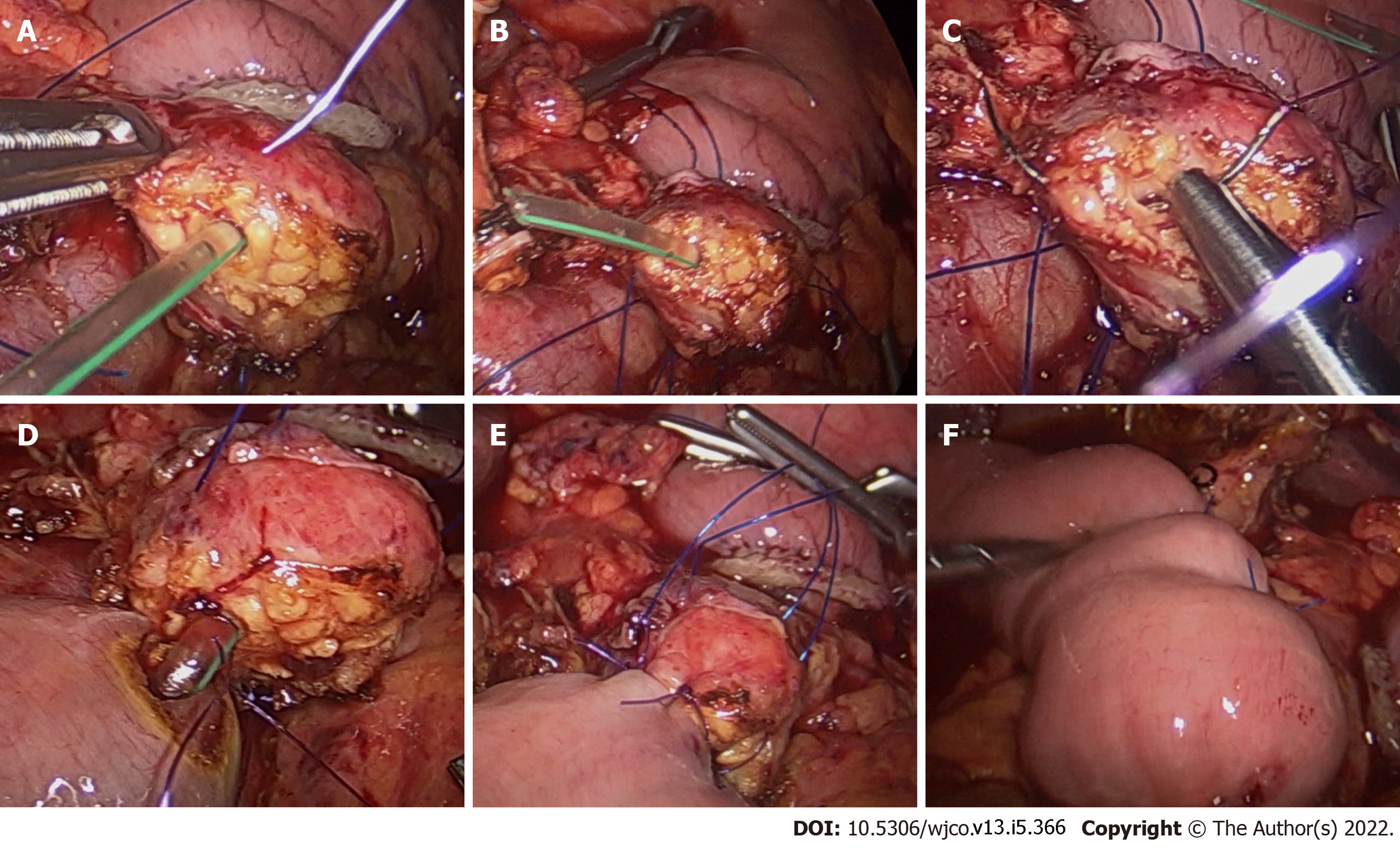Copyright
©The Author(s) 2022.
World J Clin Oncol. May 24, 2022; 13(5): 366-375
Published online May 24, 2022. doi: 10.5306/wjco.v13.i5.366
Published online May 24, 2022. doi: 10.5306/wjco.v13.i5.366
Figure 1 Steps of modified binding pancreaticogastrostomy.
A: Two full-thickness stay sutures are taken at the corners of the pancreatic cut surface; B: A posterior gastrotomy is made at a site where the pancreas can be invaginated without undue tension; C: Anterior gastrotomy of approximately 4-5 cm is made proximal to the stapled end of the stomach; D: A full-thickness purse-string suture is placed around the posterior gastrotomy using 2-0 polypropylene; E: The pancreas lifted using the stay sutures and invaginated into the stomach through posterior gastrotomy; F: At least 2 cm of the pancreas invaginated into the stomach. Purse-string suture tied to bind the gastric wall to the pancreatic stump.
Figure 2 Steps of modified Blumgart pancreaticojejunostomy.
A: The 26 mm ½ circle round body needle of 3-0 polypropylene suture is straightened to facilitate the placement of transpancreatic suture; B: One transpancreatic U suture is taken on either side of the pancreatic duct, and the sutures were held with bulldog clamps; C: 8 o’clock duct to mucosa suture taken with the needle moving in-out direction in the ductal end; D: The pancreatic duct stent is placed after ligating the 6 and 8 o’clock sutures; E: Completion of duct to mucosa sutures; F: Transpancreatic U suture is tied to wrap the pancreatic cut edge with the jejunum.
- Citation: Choudhury SR, Kalayarasan R, Gnanasekaran S, Pottakkat B. Modified binding pancreaticogastrostomy vs modified Blumgart pancreaticojejunostomy after laparoscopic pancreaticoduodenectomy for pancreatic or periampullary tumors. World J Clin Oncol 2022; 13(5): 366-375
- URL: https://www.wjgnet.com/2218-4333/full/v13/i5/366.htm
- DOI: https://dx.doi.org/10.5306/wjco.v13.i5.366














